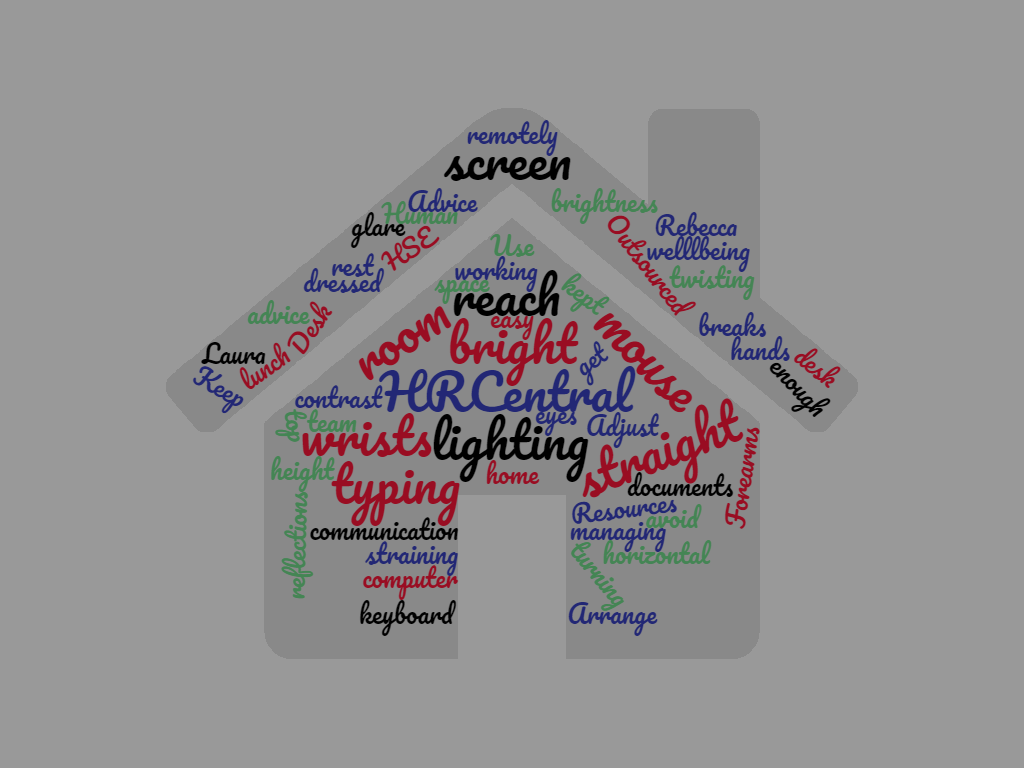Working home is our new reality for the foreseeable future.
The Government have also indicated that everyone who can work from home, where work is still available should do so. Literally thousands of people will be working from home for the first time. Below are some suggestions on how to make working from home work for your team and as a People Manager.
In normal circumstances, anyone who works from home should receive an assessment of their domestic workplace, but this is clearly not terribly practical at the current time. We have outlined some practical points to help you work more effectively from home and for you as a Management team to support your teams remotely throughout the day, ensuring team members are engaged, motivated and that meaningful work output is maintained.
Routine
Encouraging your team to have a routine will be essential to maintain a semblance of meaningful output and will help to create team cohesion and minimise disruption when the team members are reintegrated to the office environment post Coronavirus pandemic.
Your team members may also have other pressures throughout their day, children at home or sick relatives to care for. It is important to be sensitive to these pressures and to encourage them to set their own hours so that productivity is maintained and the team member feels supported by the management team. It may be that there are core hours when the team are available to communicate with each other, it is important to offer flexibility thereafter to complete tasks.
Their routine should include definite start and finish times and lunch and coffee breaks. The start and finish times may have to be flexible, but this does not mean that there should be a drop in productivity.
Encourage your teams to have the same routine, getting up at the normal time, showered, dressed, (appropriately – especially if they attend conference calls on behalf of the business with clients). Work attire should help assist with the right mentality and assist that all-important work mode.
Equally important is setting the boundaries of when to stop work… set boundaries as their Manager and encourage your team to do the same. It is important that they have downtime to exercise and rest.
Short time working
If the employment contract supports this, many employees may welcome the opportunity to reduce the pressure of having to work a full day, especially if they have caring responsibilities for other family members. Be sensitive to this and perhaps suggest reduced hours as a solution to the situation if the team member is getting stressed about demands on their time.
Flexible and communication channels
Be flexible with your team members, but set out your stall. Outline what you expect from them and how and how often you would like them to check in with you.
Wellbeing issues when remote from the office
Check-in regularly with your staff, maybe encourage other team members to make contact too. Have set lunch hours when you can all sign into a zoom call and chat whilst you eat. This may be a lifeline for people who live on their own and who have minimal contact with others due to social distancing. This will also assist with the team cohesion and enable to you gauge if a team member is struggling with wellbeing issues. A lack of engagement with work-related social activity and work colleagues may be a sign that the employee is struggling emotionally.
Our partner Lisa Lloyd from It’s time for Change https://hrcentral.co.uk/our-partners/ may be able to offer advice for specific situations if you are concerned about a team members mental health.
Other ideas:
- Regular team meetings with everyone present.
- Send them occasional gifts of coffee and or cake? www.sponge.com is our favourite site.
- Keep in touch generally, there doesn’t have to be a specific reason.
Setting up a work station from home
Given that the health and safety of your employees are paramount at all times, and in the absence of the ability to complete a full assessment of their home environment, you should suggest your team follow the HSE (Health and Safety Executive) guidance as to how best to set up their home-based workstation.
Advice for the team so they are comfortable and safe at their new work station
- Forearms should be approximately horizontal and eyes should be the same height as the top of your computer screen.
- Ensure there is enough room for your documents so you are not straining or twisting and turning to reach them.
- Arrange desk to avoid any bright glare or bright reflections.
- Ensure there is a space in front of your keyboard to rest your hands when not typing.
- Keep wrists straight when typing.
- Use a mouse within easy reach so wrists are kept straight
- Adjust screen brightness and contrast to suit lighting in the room
Breaks
Encourage your team to:
take regular, scheduled breaks, coffee breaks – again via zoom are a great way to keep connected, and short frequent breaks are better than longer breaks.
Stretch and change position,
Not to use the computer for long prolonged periods of time, to look up and focus on something in the distance to avoid eye strain.
Change activity before you get tired, rather than to recover.
Following these simple steps will help inclusivity and keep your team safe and motivated and more importantly in a routine for an easy transition back to the office routine.



